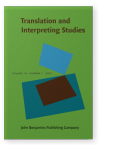Vol. 16:1 (2021) ► pp.41–60
Radical cultural specificity in translation
Most existing discussions of cultural specificity in translation presume that although translation may be difficult, the meaning of culturally-specific terms is at least known. This article considers the possibility of “radical cultural specificity,” in which the meaning of the item is inaccessible to the reader or translator and no native participant in the source culture is available to advise. Based on the concepts of culturally-specific items from the work of Javier Aixelá and radical translation from the work of W.V.O. Quine, I develop the notion of radical cultural specificity using examples from medieval Celtic literature, highlighting the role of knowledge and lack of knowledge in interpretation and translation. The concept is then briefly applied to science fiction or speculative fiction as well, suggesting that these concerns are not merely the province of scholars of historical literature.
Article outline
- Introduction
- What we know, and what we don’t know
- On radical specificity and untranslatability
- What we partly know
- On strategies
- What we invent
- On strange beasts
- Acknowledgments
- Notes
-
References
